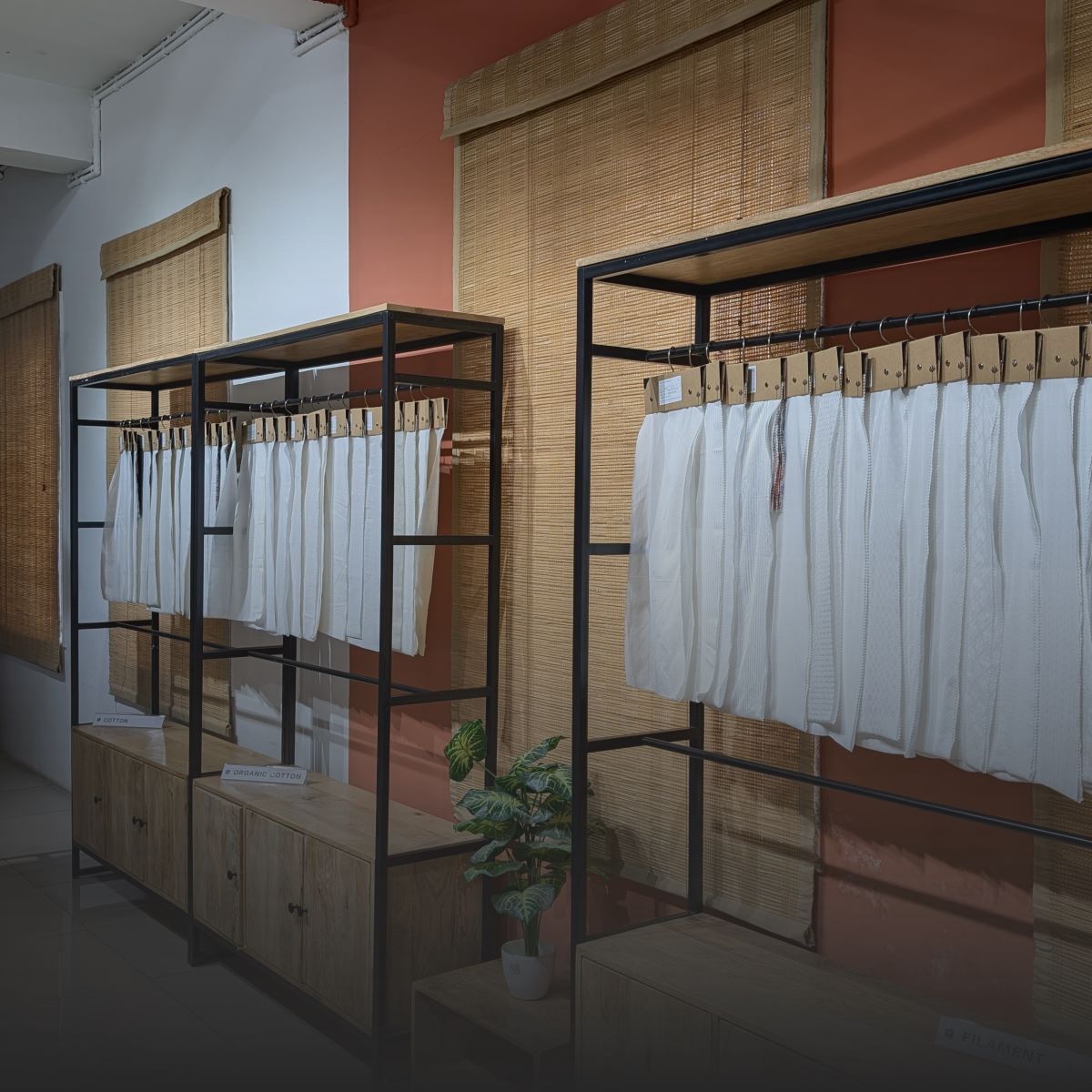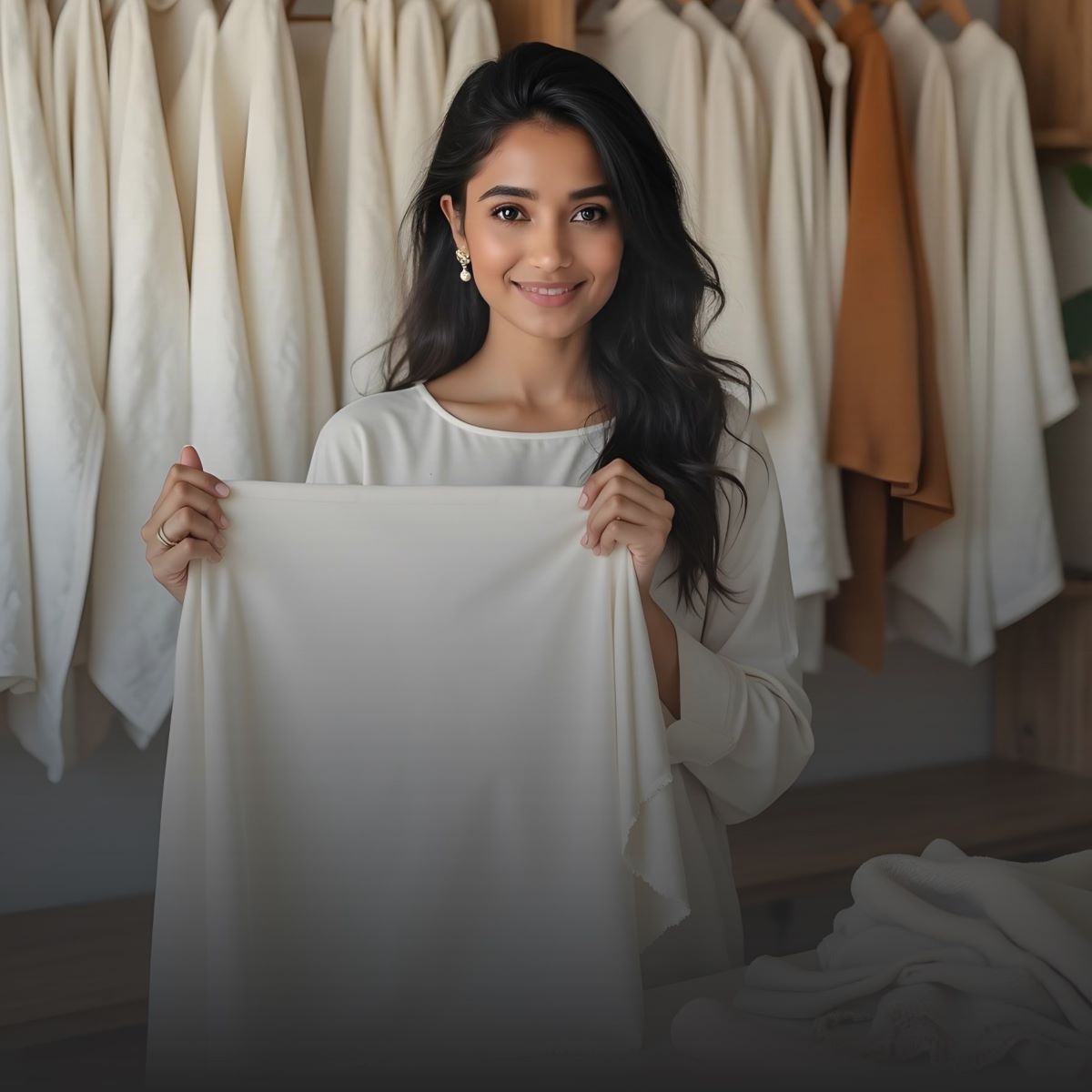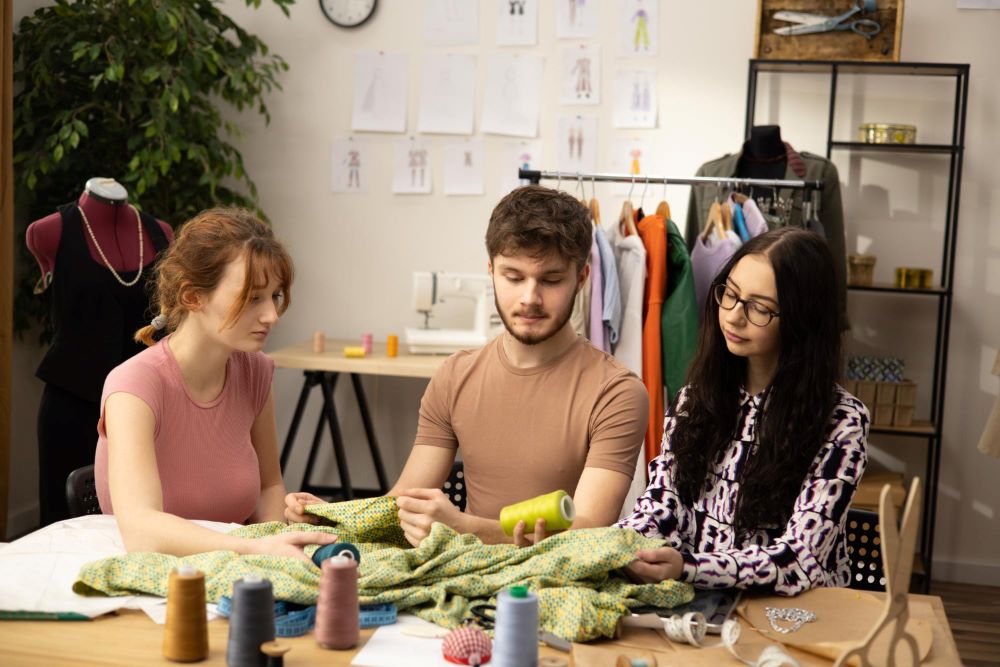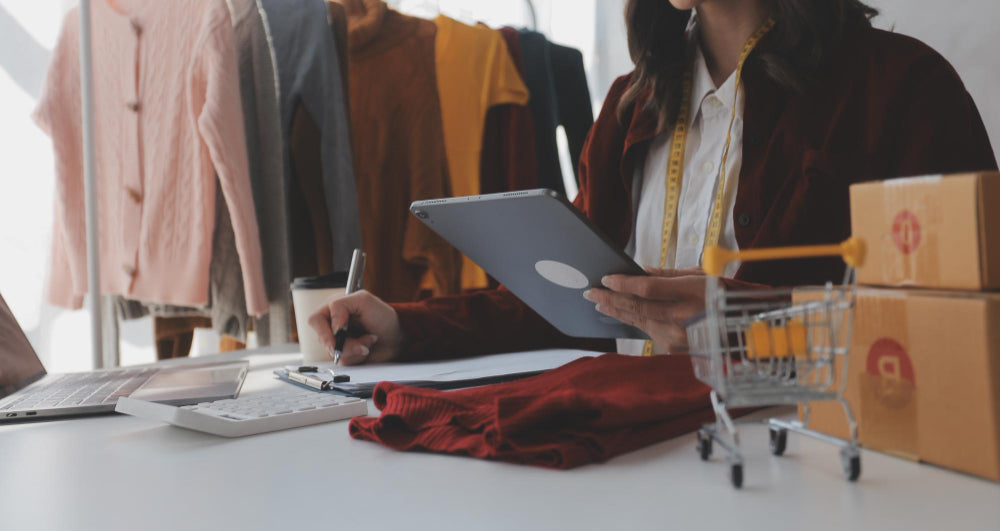Introduction To Smart Sourcing In The Fashion Industry
In the fast-paced fashion world, sourcing is more than just finding a seller. It also means making smart, strategic decisions that help brands grow, lower risks, and make more money.
Smart buying can help small fashion companies do well. Innovative sourcing means choosing suppliers and labour partners in a planned way. It emphasizes cost-effectiveness, quality, reliability, scalability, and ethics.
Smart sourcing goes beyond price and convenience. It explores the entire supply chain, from raw materials to completed products, to improve each component. This blog will discuss how US fashion companies can succeed through good sourcing tactics and the secrets of global sourcing in this sector.
You Can Also Read This For More Related Information : All New Fabriclore - Simplified Fabric Sourcing
Why It's Crucial For Fashion Startups
Financial resources are limited for small startups, and profit margins are even more constrained. Smart sourcing enables emerging brands to:
- Ensure excellent quality while adhering to budget constraints.
- Increase production while maintaining consistency.
- Shorten the time it takes to bring a product to market.
- Create a brand reputation that is both sustainable and ethical.
- Reduce the potential issues associated with supply chain interruptions.
Smart Sourcing Strategies That Actually Work

Let's find out where to source for your fashion startup in the USA. These savvy sourcing techniques will decrease costs and optimize earnings. These methods are based on successful US fashion startups.
Start Small, Scale Strategically
Starting production in small amounts is a great way to figure out what the market wants while also using your resources well. Think about the San Francisco-based brand that started by only making a few of its most popular items. It then increased production after pre-orders and waitlists showed that people wanted it.
Key Tactics:
- Test small batches
- Measure customer response
- Scale after validation
- Use flexible MOQs
- Start with core SKUs
Small-batch production works best in states like California and New York, where there are a lot of makers and designers. For example, the Fashion District in Los Angeles has low minimum order amounts (MOQs), which lets new businesses try things out without paying a lot of money upfront.
Build Supplier Relationships Early
Whether the provider is a fabric supplier or a trim supplier, having good relationships with them is essential. Companies that visit their suppliers' facilities make contracts and talk to them to get to know their suppliers better and get better prices, a priority during busy times, and the ability to make changes to their orders.
Key Tactics:
- Meet suppliers personally
- Negotiate early
- Set quality expectations
- Create long-term contracts
- Communicate consistently
For example, a company in Chicago works closely with its cotton suppliers in Peru, which has helped build trust and led to joint product development projects. Building relationships early on pays off when production needs go up or when there are problems in the supply chain.
Balance Cost And Quality
A lot of the time, new businesses make the mistake of choosing the cheapest supplier. Buying cheap goods might save you money at first, but they can hurt the reputation of your brand. Instead, try to find sellers who have good reviews and reasonable prices.
Key Tactics:
- Avoid cheapest bids
- Assess value offered
- Inspect sample quality
- Check previous reviews
- Negotiate fair pricing
Minneapolis-based Design House balances cost and quality by sourcing locally from trained craftspeople, minimizing faults, and providing exceptional craftsmanship. They reduce returns and boost brand loyalty.
Use Tech-Driven Platforms
Technology is changing the way buying is done. Startups can meet with USA manufacturers of things like denim, activewear, and accessories through platforms like Maker's Row, which is based in Brooklyn, NY. These platforms also offer tools for managing the whole supply chain, from design to delivery. This makes the process more open and effective.
Key Tactics:
- Join sourcing platforms
- Use inventory tools
- Access real-time updates
- Connect with vetted makers.
- Streamline communication
JOOR, a tech platform located in New York City, provides digital wholesale management, simplifying how brands connect with global retailers and manage inventory in real-time. These digital tools effectively streamline processes and minimize operational mistakes.
Prioritize Ethical And Sustainable Sources
Today's consumers, particularly those from Gen Z and Millennials, are very aware of the importance of ethical production. Brands that resonate with these values cultivate a dedicated audience.
Key Tactics:
- Choose green partners
- Share impact stories
- Use certified materials
- Ensure fair labour
- Promote transparency
Some states, like Oregon and Washington, also see more ethical manufacturing hubs grow. This is because those states support green efforts and new textile technologies that will last.
Diversify Suppliers
Regardless of the supplier's reliability, depending on just one source carries inherent risks. Production can be significantly impacted by natural disasters, geopolitical issues, or even shipping delays. For this reason, it is advisable to concentrate on both global and local sources. Successful brands develop a contingency strategy.
Key Tactics:
- Work with backups
- Use global mix
- Compare lead times
- Split large orders
- Monitor each channel
Surfer Kelly Slater started Outerknown. They get their supplies from many places, like Portugal, Peru, and China, to ensure their strong supply line. This model with multiple suppliers gives you options and helps you keep the same amount of inventory even when things go wrong, like during COVID-19 or the Suez Canal blockage.
Local Sourcing Vs. Global Sourcing: What Works Best in the USA?

When starting a fashion business or growing an existing one, one of the most critical choices is looking for suppliers in the United States or worldwide. The pros and cons of each method are different.
Let's Talk About Local Sourcing First
In the past few years, local sourcing, which means working with US producers, has become more popular. Startups are moving more and more to places like California, New York, Texas, and North Carolina because they have a history of manufacturing, have skilled workers, and are close to markets.
Benefits include:
- Faster turnaround times
- Easier communication (no time zone gaps)
- Lower shipping costs
- Greater transparency and quality control
- More substantial alignment with sustainability and ethical practices
However, higher production costs are often a part of buying locally. In the United States of America, labour rules, taxes, and overhead costs make production more expensive, which can be hard for new businesses that don't have a lot of money.
For More Related Information : How to Market Your Clothing Business Online in the USA
Global Sourcing: A Competitive Advantage
When looking at local options, global sourcing presents clear benefits—especially for startups that want to grow rapidly or provide more affordable products.
Pros Of Global Sourcing
|
Advantage |
Explanation |
|
Lower Manufacturing Costs |
In places like India and China, labour and overhead costs are much lower. |
|
Wider Variety of Materials |
Global sources give you access to unique fabrics you can't usually find in the U.S. |
|
Advanced Manufacturing Tech |
Many services in places like Vietnam and Bangladesh are very advanced. |
|
Scalability |
Global companies can handle many orders coming in quickly as demand rises. |
|
Specialized Skills |
India is known for its fine cotton and hand-embroidered goods, while Italy is known for its leather goods. |
Despite the advantages of global sourcing, it also has drawbacks, such as shipping delays, language hurdles, and customs compliance. However, entrepreneurs who plan properly and maintain strong foreign ties can effectively address these issues. Fabric Material Suppliers such as Fabriclore provide authentic fabrics at the lowest prices, with low MOQs and rapid delivery.
Foster Connections, Beyond More Exchanges

For small startups, discovering a supplier resembles searching for a co-founder: you seek someone who shares your long-term vision.
- Share the narrative of your brand and your vision for the future.
- Consider negotiating for initial flexibility, such as placing smaller orders with the potential to increase later.
- Make an effort to meet face-to-face; a simple handshake can create a bond that countless emails cannot match.
- Be faithful: When you discover reliable suppliers, regard them as allies — not merely providers.
Small fashion companies growing quickly benefit from supportive suppliers.
Future Trends In Fashion Sourcing

The world of fashion sources is always shifting. Business start-ups The world of fashion sources is always changing. Business startups should keep an eye on these trends:
- Nearshoring: Moving production to the U.S. reduces lead times and increases flexibility.
- On-Demand Production: Utilising technology to make things only when orders are received, hence reducing the amount of waste produced.
- Sustainable Sourcing: Growing interest in environmentally friendly fabrics and verified ethical labour practices.
- AI-Enhanced Supply Chains: Predictive analytics is set to take on a more significant role in forecasting demand and managing inventory.
- Blockchain for Transparency: This technology is being utilized to trace the origin of garments and enhance transparency in ethical sourcing.
Startups that adopt these trends promptly will experience enhanced flexibility and increased consumer confidence.
Benefits Of Smart Sourcing

A combination of a smart sourcing strategy can help a startup grow and stay in business in many ways, including:
- Cost Efficiency: By making it easier to choose and negotiate with vendors, smart buying helps cut production costs without lowering quality.
- Enhanced Product Quality: The end product meets brand standards thanks to careful screening and ongoing quality checks.
- Speed to Market: With flexible sourcing, startups can quickly adapt to market changes and what customers want.
- Speed to Market: With flexible sourcing, startups can quickly adapt to market changes and what customers want.
- Sustainable Practices: Working with eco-friendly suppliers is suitable for your brand's image and long-term health.
- Risk Mitigation: Smart contracts and a wide range of suppliers make relying on just a few sources less critical, which keeps things running smoothly.
Why Smart Sourcing Can Help You Stay Competitive

Smart brands win in today's fast-paced fashion market, not huge ones. Smart sourcing helps small fashion firms survive, thrive, and scale with agility, quality, and cost.
Why smart sourcing is your secret competitive advantage:
1. Speed to Market
New trends change frequently. Choose rapid suppliers, especially local ones, to turn designs into finished goods faster than slower competitors.
2. Better goods
Modern wise purchasers realise that reliable procurement ensures fabric quality, craftsmanship, and attention to detail. Quality increases corporate loyalty, decreasing returns and increasing reviews.
3. Cost savings
Thoughtful sourcing seeks the optimum cost-value balance rather than the lowest price, which typically means low-quality goods. This boosts profits and protects your brand.
4. Pivotability
The market tastes change frequently. Smart sourcing partners let you modify collections without risk with low MOQs, easy reordering, and customisable options.
5. Better branding and storytelling
Customers want to know how and where their items are created. If you use ethical, sustainable, or handcrafted materials, you can tell tales about your items that connect purchasers.
6. Risk reduction
Supply chain delays, unreliable materials, and too much inventory are reduced by good sourcing. A reliable supplier network protects against global issues.
7. Innovation Access
Leading textile suppliers frequently guide startups through the newest innovations: organic blends, temperature-regulating fibres, recycled materials, and beyond. Getting early access allows you to present innovative collections ahead of your competitors.
Use Technology To Your Advantage

By 2025, sourcing has evolved beyond the days of endless trade shows and cold emails. Innovative startups are leveraging technology to:
- Source fabrics online from B2B marketplaces such as Fabriclore, Common Objective, Maker’s Row, and others.
- Utilise applications to oversee supply chains by tracking inventory levels, predicting demand, and monitoring supplier performance indicators.
- Close deals more efficiently using digital platforms instead of traditional faxing and prolonged phone conversations.
Utilizing tech-enabled sourcing allows you to save time, minimize errors, and maintain flexibility in a market constantly evolving with trends.
Concluding Reflections
Instead of being something that's done in the background, smart buying is a huge deal for small fashion companies. Small fashion firms might succeed in the US market by implementing excellent sourcing tactics. Begin by selecting the best combination of local and global suppliers, leveraging digital platforms to increase efficiency, and emphasising ethical and sustainable production processes.
Develop excellent relationships, predict upcoming trends, and use technology to drive growth. Thinking forward can help your startup survive and prosper.
The narrative of your pieces flows well.
Make sure it's an engaging and compelling story.
For More Related Information : How to Source Fashion Fabric for Your Clothing Business in the USA
FAQs
1. What Exactly Is Smart Sourcing In A Fashion Startup?
Smart sourcing means strategically choosing suppliers and production partners based on cost, quality, scalability, ethics, and reliability – not just price. It involves a complete supply chain assessment to ensure that products efficiently meet brand values and market demands.
2. Why Should Small Fashion Brands Prioritize Smart Sourcing Instead Of Finding The Cheapest Supplier?
Although cheaper suppliers may seem attractive initially, they often compromise on quality. Smart sourcing balances cost and quality, helping brands maintain strong margins, build customer trust, and reduce returns – saving more money in the long run.
3. Is Local Or Global Sourcing Better For Fashion Startups In The USA?
Both have advantages:
- Local sourcing allows faster turnarounds, easier communication, and better quality control.
- Global sourcing offers cost advantages, unique materials and mass production options.
Many successful startups use a mix of both to balance risk and profit.
4. How Can Startups Build Strong Relationships With Suppliers?
Startups should meet suppliers in person (whenever possible), communicate clearly and consistently, negotiate fairly and view suppliers as long-term partners rather than just vendors. Building trust early leads to better prices, flexibility and support during the growth stages.
5. What Role Does Technology Play In Smart Sourcing Today?
Tech platforms like Fabriclore, Makers Row and JOOR allow startups to find suppliers, manage supply chains, track inventory, predict demand and make deals online. Using technology saves time, improves accuracy and helps startups stay agile in a fast-changing marketplace.
If you want to buy wholesale fabric in the USA, start by finding a trusted supplier that offers good quality fabric at affordable prices. Buying in bulk can help you save money, whether you’re a fashion designer, business owner, or someone who loves sewing. Choose a supplier that gives you many fabric options, low minimum order, and fast delivery. This way, you can easily get the materials you need for your projects.
We also happen to be a magnet for suggestions, and would love to catch yours….throw us yours on hello@fabriclore.com




